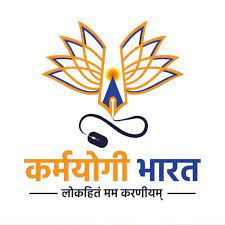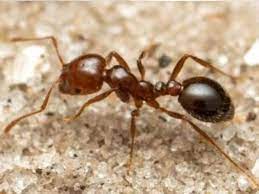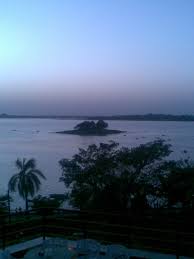Today’s Current Affairs: 15th Sep 2023 for UPSC IAS exams, State PSC exams, SSC CGL, State SSC, RRB, Railways, Banking Exam & IBPS, etc
Table of Contents
iGOT Karmayogi Platform:

The iGOT Karmayogi Bharat platform, in partnership with NITI Aayog, has introduced a new collection dedicated to the Aspirational Blocks Programme (ABP).
- This initiative aims to enhance the competencies of 5,000 Block-level officials in 500 identified Blocks, helping them perform their duties effectively in under-served areas.
- The curated module includes ten courses covering topics such as time management, communication, leadership, sustainable development goals, problem-solving, stress management, and team building.
- iGOT Karmayogi is a comprehensive online portal to guide government officials in their capacity-building journey.
- The portal combines 6 functional hubs for online learning, competency management, career management, discussions, events and networking.
Salem sago : GI Tag

The Geographical Indication (GI) tag has been granted to Salem Sago (Javvarisi), which is expected to facilitate its entry into the international market.
- Sago (also called Sabu dana) is a pearl-white product made from raw tapiocas, appearing as small hard globules or pearls.
Tapioca cultivation is significant in Tamil Nadu. - Sago production originated in Salem district, which serves as the primary hub for sago production in India, initially on a cottage-scale basis.
- It is produced from wet starch powder obtained from crushed tapioca roots.
- The wet starch powder is used to manufacture sago, while the dry powder is utilized as a raw material in various industrial applications.
- Salem Sago has historical significance as it was used as a food source during severe droughts in the Travancore Kingdom.
The 2023 World Trade Report:

The 2023 World Trade Report, published by the WTO, explores the role of international trade in building a more secure, inclusive, and sustainable world.
Key findings of the report:
- The report addresses the shift in the narrative around globalization.
- It emphasizes policy goals beyond trade efficiency, including peace, security, poverty reduction, and sustainability.
- The report advocates for “re-globalization,” expanding trade integration to more economies, people, and issues.
- Geopolitical tensions, the Ukraine conflict, and the rise of China have impacted global trade dynamics.
- The COVID-19 pandemic highlighted the importance of resilient supply chains.
- Reorientation of Trade Trade is gradually aligning along geopolitical lines.
- Trade flows within hypothetical geopolitical “blocs” are growing faster than those between them, indicating a shift towards friend-shoring.
- Despite challenges, bilateral trade between China and the United States reached record highs.
- International supply chains played a vital role in responding to supply shortages during the COVID-19 pandemic.
- Inclusiveness Trade integration has lifted millions out of poverty.
- Sustainability Trade can contribute to sustainability by providing access to green technologies.
Hindi Diwas 2023:

Hindi Diwas, celebrated annually on 14th September, holds immense historical significance as it commemorates the adoption of Hindi as one of India’s official languages.
- Its roots extend back to the early days of India’s struggle for independence when a group of committed Hindi scholars and activists formed the Hindi Sahitya Sammelan (Hindi Literary Conference) in 1918 to champion Hindi as a national language.
- The turning point arrived on 14th September, 1949, when the Constituent Assembly of India officially embraced Hindi as the nation’s official language, envisioning it as a unifying element among India’s diverse linguistic and cultural regions.
- Hindi stands as one of the two official languages of the Union government along with English and is one of the 22 scheduled languages of India.
- World Hindi Day is observed on 10 January.
- It commemorates the anniversary of the first World Hindi Conference held in Nagpur on 10th January, 1975.
Operation Polo:

On 13th September, 1948, India’s military action known as “Operation Polo” was launched to integrate the princely state of Hyderabad, a significant event in Indian history.
- The Nizam of Hyderabad, Mir Osman Ali Shah, had hesitated to join India or Pakistan after Independence, capitalizing on the Indian government’s preoccupation with the Kashmir conflict.
- A standstill agreement signed in November 1947 maintained the status quo between Hyderabad and India for a year, allowing the Nizam to continue governing independently.
- However, escalating tensions, cross-border raids, and intentions to establish an independent state, prompted India to act.
- The operation saw well-planned military thrusts from multiple directions, ultimately leading to the surrender of the Hyderabad state forces.
- This pivotal campaign, carried out under the watchful eye of Sardar Vallabhbhai Patel, culminated in a ceasefire declaration on 17th September, 1948 effectively placing Hyderabad under Indian control by 18th September, 1948.
Picoflare Jets:

The Solar Orbiter has recently captured extreme ultraviolet images of the Sun, revealing a multitude of small-scale jets known as “picoflare” jets within a coronal hole, raising questions about their role in powering the solar wind and impacting space weather.
- The Solar Orbiter is a collaborative mission between the European Space Agency (ESA) and NASA that aims to investigate the Sun’s magnetic fields, energetic particles, and plasma in their pristine state before they are altered during their journey.
- The mission was launched in February 2020.
- Picoflare jets are small-scale phenomena on the sun that release a significant amount of energy in a short period, typically lasting only a few dozen seconds.
- These jets, named as pico, as they carried approximately one-trillionth as much energy as the largest flares that the sun is believed to be able to produce.
- ‘Pico’ is an order of magnitude that denotes 1012, or one trillionth of a unit.
- The phenomenon responsible for creating these jets in the sun’s coronal holes is likely magnetic reconnection.
- Magnetic reconnection involves the breaking and reconnecting of magnetic field lines, which releases a substantial amount of stored energy.
Cirrus Clouds : New Study

A new study has found a significant statistical correlation between thunderstorms occurring around the world and the formation of wispy cirrus clouds, which might increase global warming.
- Cirrus Clouds are delicate, feathery clouds that are made mostly of ice crystals.
- They are thin and wispy in appearance, often appearing as delicate, high-altitude filaments or strands.
- Their wispy shape comes from wind currents, which twist and spread the ice crystals into strands.
- They are usually white or have a light grey colour. In the daytime, they are whiter than any other cloud in the sky.
- They are commonly known as “mare’s tails” because they are shaped like the tail of a horse.
- Typically found at heights greater than 20,000 feet (6,000 metres), cirrus clouds are composed of ice crystals that originate from the freezing of supercooled water droplets.
- They generally occur in fair weather and point in the direction of air movement at their elevation.
Epizootic Haemorrhagic Disease:

Authorities in the UK say they are “closely monitoring” the spread of Epizootic haemorrhagic disease (EHD) that has been recorded in Spain, Portugal and Southern Italy recently.
- Epizootic Haemorrhagic Disease (EHD) is an insect-born disease caused by a virus and affecting wild and domestic ruminant species.
- It has become an emerging disease in cattle and was added to the World Organisation of Animal Health list of notifiable diseases in May 2008.
- It is a disease of animals, not humans, so there are no human or public health issues.
- The causative agent, epizootic hemorrhagic disease virus (EHDV), belongs to the Orbivirus genus.
- EHDV is transmitted between ruminant hosts by Culicoides midges, tiny biting flies commonly known as “no-see-ums” or gnats that are smaller than mosquitoes and other flies.
- Clinical signs: Fever, weakness, lack of appetite, more saliva than usual, difficulty swallowing, skin rash on the udder, bleeding (skin and internal tissues), swollen red skin near hooves, swollen lining of the mouth, mouth ulcers, difficulty in breathing and sudden death (particularly in deer).
- There is no treatment for HD in wildlife populations and no commercially available vaccine to protect against EHD.
First-Ever MotoGP Bharat Grand Prix:

The first-ever MotoGP Bharat Grand Prix is set to take place at the Buddh International Circuit in Greater Noida, Uttar Pradesh.
- The MotoGP, or Grand Prix Motorcycle Racing, is the premier motorcycle championship in the world.
- It is the oldest motorsport championship in the world, with the first-ever annual competition being held in 1949.
- The governing body for MotoGP is the Fédération Internationale de Motocyclisme (FIM).
- It is a non-stop race from start to finish, without any pit stops.
- Each race lasts between 40 and 45 minutes over a distance of between 100 and 130 km, depending on the circuit.
MotoGP 2023:
- The 2023 season has 11 teams and 22 riders – two riders from each team.
- This season has 21 Grand Prix races in 2023 around the world. One of these locations this season is India.
- Moto GP Bharat this year will be hosted at the Buddh International Circuit in Noida, Uttar Pradesh.
- It is a five-kilometre-long track with a width of 12 metres.
- This track has 16 corners, 8 being left-hand corners and 8 being right-hand corners.
- The longest straight on this track is 1006 metres.
Third Phase Of The eCourts Projects:

The Union Cabinet recently approved the third phase of the eCourts Projects with a budget allocation of ₹7,210 crore.
- The eCourts Project was conceptualised on the basis of the “National Policy and Action Plan for Implementation of Information and Communication Technology (ICT) in the Indian Judiciary – 2005” submitted by eCommittee, Supreme Court of India, with a vision to transform the Indian Judiciary by ICT enablement of Courts.
- E-committee is a body constituted by the Government of India in pursuance of a proposal received from the Hon’ble the Chief Justice of India to constitute an eCommittee to assist him in formulating a National Policy on computerisation of the Indian Judiciary and advise on technological communication and management-related changes.
- It is a Pan-India Project, monitored and funded by the Department of Justice, Ministry of Law and Justice, Government of India for the District Courts across the country.
- The Project envisages:
- To provide efficient and time-bound citizen-centric service delivery.
- To develop, install and implement decision support systems in courts.
- To automate the processes to provide transparency in accessibility of information.
- To enhance judicial productivity, to make the justice delivery system affordable, accessible, cost-effective, predictable, reliable and transparent.
The Phase III :
- The Phase III of the centrally sponsored project – to be implemented over four years – will see the digitisation of entire court records, both legacy and pending cases, at an estimated cost of ₹2,038.40 crore.
- It seeks to spruce up the digital infrastructure of courts by setting up 2500 new modern, virtual-friendly courts, establishment of 1150 virtual courts, and 4,400 eSewa kendras in all court complexes.
- Around 3,108 crore documents will be digitised as part of the project.
Red Fire Ants : World’s Most Invasive Species

The red fire ant, one of the world’s most invasive species, has been recently found in Europe for the first time, according to a new study.
- Red Fire Ants commonly known as fire ants, are a species of stinging ants native to South America.
- Scientific Name: Solenopsis invicta
- They are known for their aggressive behavior, painful stings, and large colony sizes. The ant can also damage crops and local ecosystems.
- They are reddish-brown to reddish-black in color, with a characteristic coppery head.
- They are small ants, typically ranging from 1/8 to 1/4 inch (3-6 mm) in length.
- Their bodies are segmented, with a distinct two-part thorax.
- They are infamous for their painful stings.
- They have a potent venomous sting that can cause intense burning and itching sensations in humans.
Multi-Utility Legged Equipment : North Tech Symposium 2023

The Indian Army unveiled the Multi-Utility Legged Equipment (MULE) at the North Tech Symposium 2023 held recently in Jammu.
- Multi-Utility Legged Equipment (MULE) is an autonomous load-bearing robot developed for the Indian Army.
- It has been manufactured for human-less intervention to locate and eliminate terrorists.
- It is embodied with 360-degree cameras and radars that would help the operator to detect any threat and use the firing platform to shoot it down.
- It is an analog-faced machine, built with four legs and with a payload capacity of 12 kg.
- The equipment can be either operated on Wi-Fi or Long-Term Evolution (LTE), making it workable for distances up to 10 km from the location.
- It is controlled by an easy-to-operate remote control.
- A firing platform can also be integrated into it.
- It is capable of taking up projects with pre-fed missions and is viable to be used in all terrains; it can be easily operated in snow and mountains as well.
- It can climb mountains hassle-free at upto 45 degrees and climb steps as high as 18 cm.
North-Tech Symposium 2023:
- It was jointly organised by the Indian Army’s Northern Command, the Society of Indian Defence Manufacturers (SIDM) and IIT-Jammu.
- The event comprised exhibitions, product launches, one-on-one structured interactions, technical seminars, ideas and innovation displays, as well as military equipment displays.
Skill India Digital (SID) Platform : Launched

The Ministry of Skill Development recently launched the Skill India Digital (SID) platform.
- SID serves as India’s Digital Public Infrastructure (DPI) for the skill development, education, employment and entrepreneurship ecosystem.
- SID Platform aims to bring all skilling initiatives under a single umbrella and provide skill development and entrepreneurial support to people.
- Built by the National Skill Development Corporation (NSDC) in collaboration with multiple industry players, the platform is part of the World Bank-assisted Skill Acquisition and Knowledge Awareness for Livelihood Promotion (SANKALP) programme.
- The platform aligns with the vision articulated in the G20 framework for building Digital Public Infrastructure (DPI) and the digital economy.
Bhoj Wetland:

The National Green Tribunal (NGT) ordered Madhya Pradesh government to stop the operation of cruise vessels as well as other motor-propelled boats in the Bhoj wetland.
- Bhoj wetland consists of two contiguous human-made reservoirs, the upper and lower lakes, located in the city of Bhopal, Madhya Pradesh.
- The Upper lake is called Bhojtal (Bada Talaab) and the Lower Lake is known as Chhota Talaab.
- The lakes are very rich in biodiversity, particularly for macrophytes, phytoplankton and zooplankton.
- It has more than 15 kinds of fish and several vulnerable species, including turtles, amphibians and aquatic invertebrates.
- It was designated as the Ramsar site in 2002.
National Green Tribunal (NGT):
- The National Green Tribunal has been established under the National Green Tribunal Act 2010.
- New Delhi is the Principal Place of Sitting of the Tribunal, and Bhopal, Pune, Kolkata and Chennai shall be the other four places of sitting of the Tribunal.
- NGT is mandated to make disposal of applications or appeals finally within 6 months of the filing of the same.
C-295 MW Aircraft : Received

The Indian Air Force received the first C-295MW transport aircraft from Airbus in Seville, Spain.
- C-295 MW aircraft is a transport aircraft of 5-10 tonne capacity.
- It will replace the legacy Avro aircraft in the Indian Air Force (IAF) procured in the 1960s.
- It is a versatile and efficient tactical transport aircraft which can perform a number of different missions.
- Under the contract, 16 aircraft will come in fly-away condition from Seville, while 40 will be manufactured by Airbus jointly with Tata Advanced Systems Ltd. (TASL).
- The aircraft, with a flight endurance of up to 11 hours, can carry out multi-role operations under all weather conditions.
- It can routinely operate day as well as night combat missions from desert to maritime environments.
- It can also operate on short, unprepared airstrips as it is capable of Short Take-off and Landing (STOL).
- It has a rear ramp door for quick reaction and para dropping of troops and cargo. Short take-off/land from semi-prepared surfaces is another of its features.
- It can be converted into an air tanker that can deliver up to 6,000 kg of gasoline to fixed and rotary wing receivers by adding a detachable refueling kit.
- It has a cutting-edge radar with 360-degree coverage to give a complete picture of the airspace in its Airborne Early Warning variant.
- The C-295 can be transformed into a powerful water bomber that can put out forest fires with up to 7,000 litres of water due to a flexible roll-on/roll-off system.
- It is equipped with a close-air-support operation that uses an Intelligence Surveillance and Reconnaissance (ISR )with a multi-mission radar that can also be weaponised.




